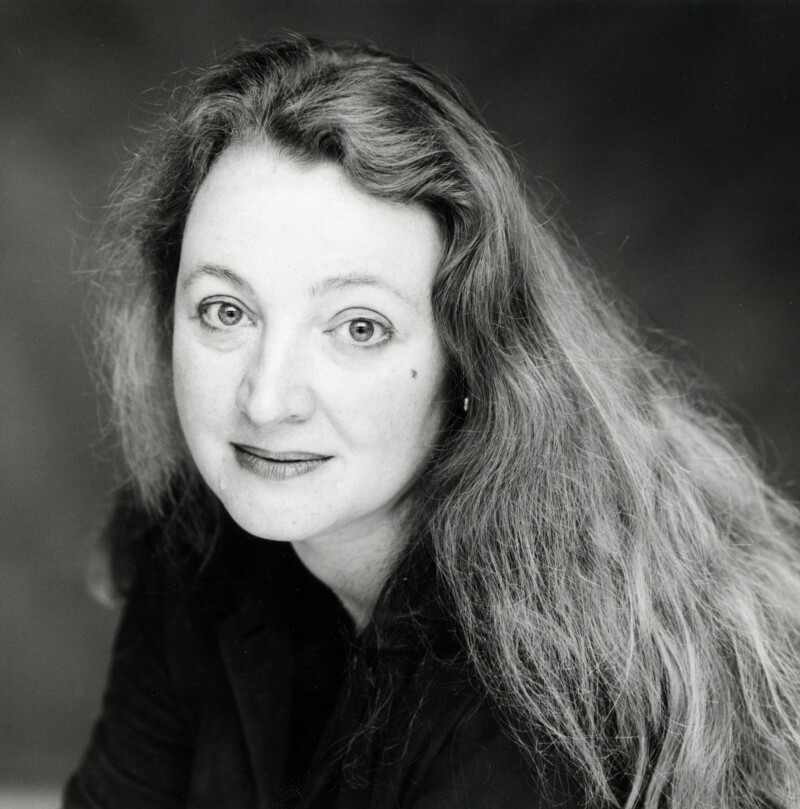Hitchcock and Me Amanda Craig

Share this
If I had to point to one of my strongest formative experiences as a novelist, it would be seeing Hitchcock’s Vertigo at the now defunct Scala Cinema in Pentonville Road in 1981, the year I came to live and work in London.
I had seen other films of his before: the utterly terrifying Psycho at school, and the compelling but mystifying North by Northwest in the school holidays. I must also have seen The Lady Vanishes and The 39 Steps. In the 1970s, Hitchcock had seemed part of an era confined to black-and-white afternoon television, in which stylish couples tap-danced, slapped, swooned and swapped wisecracks. His work merged with classics by Powell and Pressburger, Otto Preminger, Rogers and Hart.
Vertigo was to change all that. I have never been so electrified by a movie, and its complete blend of image, music, script, direction and actors. It achieved the dissolution between the inner and the outer worlds in a way I had thought possible only in literature. When I read, and even more when I write, I ‘see’ it as a film, only with added sensations like smells, touch and taste, and an awareness of form. Vertigo revelled in its own artifice, while also having a degree of naturalism, and it celebrated what I have always believed in, passionately and unfashionably, which is the supremacy of plot.
Hitchcock’s preference was for bad books, which he turned into Hollywood gold – but there was one exception, and that was the novels and stories of Daphne du Maurier. Largely dismissed as ‘women’s fiction’ by the literary elite, du Maurier wrote supremely Gothic novels that fitted seamlessly into Hitchcock’s own obsessions. It also, for a variety of different reasons, fitted into the state of mind I was in when writing my latest novel, The Golden Rule.
It is my belief that art moves us deeply when it is created by people wrestling with a terrible schism in their personality which gets played out like a recurring nightmare. That nightmare can be about all kinds of things – like a boy genius feeling he is owed the education of a gentleman yet forced to work in a blacking factory (Dickens), or a brilliant young woman artist being raped by her father’s pupil (Artemisia Gentileschi) and having to testify to this in court, or, like so many women writers, being born poor and plain and supremely gifted in a society that denies women respect or autonomy. Du Maurier’s public persona was that of a beautiful, conventional wife and mother; in private, she was a lesbian who lived in Cornwall partly so she could have affairs with women. Hitchcock’s public persona was of an all-powerful Hollywood director who fell in love with his leading ladies but was rejected because he looked like a human potato.
In other words, these artists knew one thing but felt another. Everyone has to cope with different kinds of conflict and trauma, whether this is in trying to reconcile the ideal and the real, or rooted in particular, private and specific experiences. Artists confronted with trauma typically tend to split themselves into two, so that both sides can fight it out and find catharsis. Both du Maurier and Hitchcock repeatedly turn to plots which revolve around doubles. Think of the second Mrs de Winter and the first – the former innocent and gentle, the latter cruel and manipulative. Think of Strangers on a Train, and the contrast between good Guy and bad Bruno, and the plot hatched by the latter that they should each murder the person who is stunting the other’s life. Interestingly, Hitchcock’s film deviates from the novel by Patricia Highsmith. Highsmith wrote her novel as a form of homosexual seduction. Her Guy is blackmailed into committing the murder of Bruno’s father, and so into a suggestive intimacy with a psychopath, but Hitchcock’s hero, crucially, resists killing. Even allowing for Highsmith’s torment as a gay woman in a time of homophobia, it’s a grim story. Hitchcock’s hero never entertains Bruno’s plot. He is truly innocent, which makes him rather less interesting if more sympathetic.
My own novel, The Golden Rule, is inspired by both Strangers on a Train and Rebecca. It arose out of conversations with a number of friends who had discovered, after many years of blameless married life that their spouses were unfaithful. It was when I heard this story for the third time in one year, and the words, ‘It would be so much easier to be a widow’, that the idea of two women agreeing to murder each other’s husbands clicked in my head.
Two women agreeing to murder is very different, however, from two men; for one thing, the scandals involving #MeToo had started to erupt. As soon as I had remembered the plot of Strangers on a Train, I thought immediately of the train journey I knew best, which is the Paddington to Penzance line, and I also thought of Rebecca because the first time I went to Cornwall it was to Fowey to the Daphne du Maurier festival. Rebecca was also crucial because not all the friends who had been betrayed were women. Two were men, much in the Max de Winter mould. If I raged on behalf of the women dumped with their children and no money, I also raged on behalf of the men who had slaved to pay the bills only to lose half their home and their children.
Hitchcock is drawn to plots which pivot on the notion of choice and impulse, and so am I. This is why Con, the man whom Hannah has been sent to murder, is a computer games designer. He turns out to have two names, and two possible identities. The palindromic Hannah has just one. She makes certain choices – but she could make others that would have different outcomes.
Hitchcock’s films did not quite get this far – though Vertigo, his masterpiece, based on the novel D’entre les morts by BoileauNarcejac, comes very close. Its traumatised retired detective, Scottie, is hired to follow the mysterious Madeleine, whom he falls in love with, and who commits suicide by jumping off a tall building. Later, he encounters a woman who is Madeleine’s double, and persuades her to dress and behave just like his lost love. For a time, he has the hope of a happier outcome in a new relationship with Madeleine’s identical twin – only to discover he has been the victim of a dizzying, manipulative murder plot.
Because Hitchcock was an artist as well as a storyteller, everything in the film amplifies its themes of disorientation. This is something I particularly learned from, because to me fiction, like film, works best when its interiority is made visible. Every single thing in my own novels, from weather to plants to details of homes and clothes, is there for that purpose, just as it is in Vertigo. When a plot moves through this emotional and psychological landscape, an audience experiences what the creator does. The director himself suffered from vertigo to the point of fainting, fear of death (he had recently been in hospital and hated it) and the desperation to control his lead actresses. You are inside his nightmare. The whole film is so saturated with interiority that it can be seen as a dream. The rise and fall of San Francisco’s streets, the plug-hole swirl of Madeleine’s blonde chignon, the plunge into destruction from a height and even the title sequence all mesmerise while causing you to question what you are seeing and believing. The film is, in essence, about the anguish and ecstasy of falling in love with someone you know to be manipulative and untrustworthy – which, it so happens, was my own state of mind when I first saw it.
What Hitchcock addresses, repeatedly, is the despair of someone who finds themselves gaslit – which is to say, not believed that what they know to be true is true. This is a strikingly contemporary preoccupation. Whether this truth involves fake news or bad science or false gods, it is a very terrible thing to feel. Ultimately, all Hitchcock’s best work is about trust. Whether the story is a relatively light-hearted spy caper (as in The Lady Vanishes) or profoundly personal and sinister (as in Spellbound) it asks, whom can we believe? Can we trust our own eyes and ears? Can we even trust our own selves?
Unsurprisingly, given that he had to work with some of the world’s most good-looking people, Hitchcock’s own self-image caused him deep anguish. ‘I have always been uncommonly unattractive. Worse yet, I know it,’ he said of himself. He also said, ‘I never understood what women wanted. I only knew it wasn’t me.’ In his films, the heroes (his avatars) are always played by the most handsome and attractive actors of their day – Cary Grant, Gary Cooper, Michael Redgrave, Laurence Olivier and Jimmy Stewart. A significant number of them are also damaged, physically like Jimmy Stewart in Rear Window, or psychologically, like Jimmy Stewart in Vertigo. All live under a cloud of suspicion. Are they criminals, murderers, lunatics, spies – or are they being manipulated by others?
In The Golden Rule my heroine, Hannah, is an impoverished Cornish girl who meets the handsome, upper-class Jake at university. She becomes pregnant, and they marry, but she discovers he has been conducting a long affair with a woman she knows only as Eve. When Hannah travels down to Cornwall to see her dying mother for the last time, she is invited into the First-Class compartment of a crowded train by the rich and beautiful Jinni – also an abused and angry wife. They get drunk together and agree to murder each other’s husbands. But the huge, hairy, ugly man Hannah goes to kill is possibly even more a victim of abuse than she is.
We want to believe Hitchcock’s heroes are telling the truth because in the fairy-tale Hollywood lexicon, beauty is truth and truth beauty. And they always get the girl, those famously icy, sophisticated, mysterious blondes like Grace Kelly, Ingrid Bergman, Eva Marie Saint, Kim Novak and Tippi Hedren, whom Hitchcock himself controlled professionally yet could not possess.
His films, which blend the shriek of a kettle or a train with that of a human (usually female) scream of terror, his suppressed eroticism and use of trains, pistons, water and big set-piece scenes to suggest sexual tension, are like haunting evocations of a dream. Their slight clunkiness make the inner world of feeling and fantasy visible as ‘real’ things, places and phenomena. This became too literal in the film Spellbound – whose sets were by the Surrealist artist Salvador Dali – but in Vertigo that tension between the real and the fantastical was held perfectly in balance. Rebecca too begins with the words ‘Last night I dreamt I went to Manderley again’. Framed by this, the whole novel (and film) is a dream, or a nightmare. It is clearly inspired by Charlotte Bronte’s Jane Eyre, but both are variants of the fairy-tale ‘Bluebeard’.
The unnamed second Mrs de Winter is also unwittingly married to a murderer, but he himself is the prey of a wicked and ruthless wife who manipulates him into killing her. Max de Winter is first humiliated in public, then accused of murder and then (wrongly) exonerated of it. He is both prince and monster; the narrator both victim and saviour. A story inspired by du Maurier’s own (admitted) jealousy of her husband’s previous lover becomes something deeper and more complex about truth, love and lies.
This, above all, is one of the reasons why Hitchcock has such a hold on my imagination. One of my contentions as a novelist is that we do not live in the rational world that many would have us believe is the only reality. All of us have experienced that other world of passion and fantasy, and it is this that Hitchcock shows erupting into the affluent American middle class he typically depicts. Nobody can be trusted. We don’t really know why Cary Grant, a twice-divorced advertising executive, is mistaken for a spy in North by Northwest, only that this mistake immediately endangers his life. The film’s comical but terrifying scene in which he is forced to drive when drunk down California’s winding roads is like a preview of the dizzying camera-work of Vertigo; so, too, is its hugely dramatic climax in which the hero tries to save the heroine from falling to her death. The psychological manipulation of Strangers on a Train segues naturally into the psychological manipulation of Rebecca. People put their trust in strangers, and they really, really shouldn’t. Yet without trust, the innocent can’t be saved, either.
In my stories, too, the violent, criminal and irrational are interwoven with a satirical view of ordinary life. Unlike Hitchcock, my perspective is informed by feminism and humanism. I am sometimes told off by critics for including murder, rape, suicide, prostitution, poverty and mental breakdown, as if these belong only in genre rather than literary fiction. Perhaps the long peace the West enjoyed after the end of the Second World War seemed to be the only normality possible to audiences – until international terrorism taught us otherwise.
All art aspires to the universal while emerging from what is painfully particular and personal. As if to acknowledge this, Hitchcock put himself in his films – you glimpse his cameos as a man in the street, a railway guard and so on. I, too, put in cameo appearances in my novels (usually with my dog), partly as a hommage to Hitchcock. I do not believe he was simply teasing his audiences, however. He put himself in his films, I suspect, to remind us that even in the imaginary world of beautiful actors, the ordinary kind of human being he represented has a place, and that we should not forget that the Hollywood god directing the movie may look more like him, than like them.
Amanda Craig is a novelist, short-story writer and critic. Her ninth novel, The Golden Rule, is published by Little, Brown. Described as ‘Strangers on a Train meets #MeToo’, it was long-listed for the 2021 Women’s Prize and chosen as a Book of the Year by all major national newspapers.



